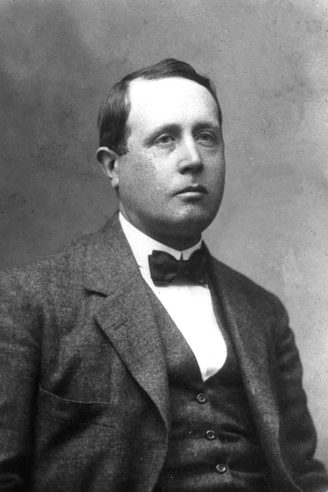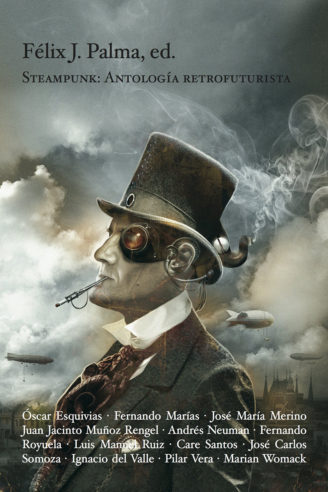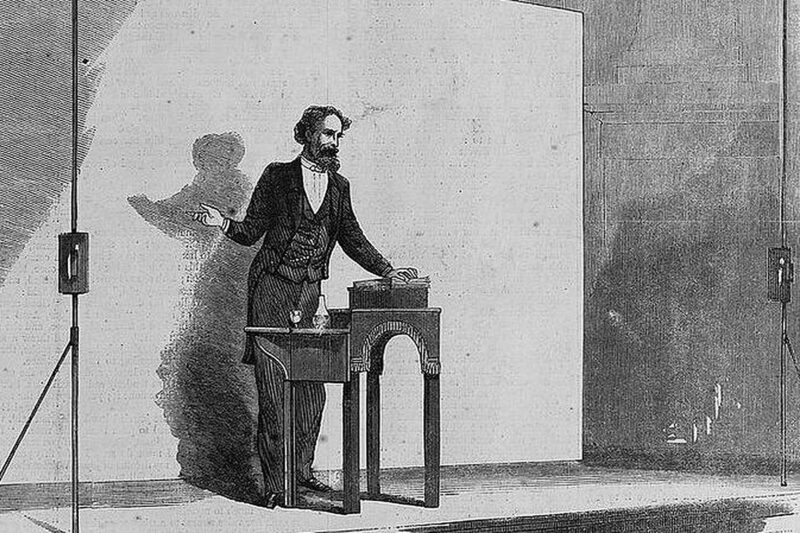Due to the uchronic nature of steampunk, a summary approach to Spanish history is unavoidable. The political instability, the loss of the colonial empire and other internal problems, such as a widespread illiteracy and a complete disregard for science, made of the nineteenth century a particularly tumultuous period in the history of Spain, a global power in decay.
Just to outline what “political instability” meant in this context, we need to bear in mind the French invasion, three civil wars, military coups, six kings, four republican presidents and five constitutions… in a period of one hundred years!
Despite the aforementioned difficulties, feudal structures vanished and a new liberal system was established: different constitutions settled people’s sovereignty, separation of powers and civil rights. The nineteenth century was not a period of grandeur for Spain, but precisely for this reason may be a challenging and exciting source of inspiration for the national and international steampunk community.
Fin-de-siècle art movements: Modernism
A realist political and aesthetical ideology prevailed after Romanticism, receiving different names all over the world (Victorian era in Great Britain). From the 1870s onward, the ideas that history and civilization were inherently progressive, and that progress was always good, were increasingly attacked, questioning the axioms of the previous age. This was the seed of Modernism, a wide array of cultural movements derived from deep changes in the Western society of the late-nineteenth and early-twentieth centuries.
You have probably heard of Barcelona as the greatest exponent of Modernist architecture in Spain. It usually refers to the movements known in other countries as Art Nouveau, Modern style, Jugendstil, Stile Liberty, Sezessionstil, etc. It is a style derived from the English Arts and Crafts movement, the pre- Raphaelite movement, the Gothic Revival and the Aesthetic movement (a restrained prelude to Art Nouveau), as well as from Symbolism. It is characterized by the predominance of curves over straight lines, rich decoration and detail, the frequent use of vegetal and other organic motifs and a taste for asymmetry and dynamic shapes.
Parc Güell or Sagrada Familia in Barcelona are just a couple of the most emblematic projects of Antoni Gaudí. In addition to this, many other Spanish cities have a rich Modernist heritage, like Madrid and my home town Vigo.
Steamy science
The nineteenth century gave birth to the professional scientist (the word scientist was first used in 1833 by William Whewell) and it was an era of invention and discovery, with radical developments in the fields of biology, chemistry, mathematics and physics, among others.
We cannot obviate three intellectual factors that destabilized European society: Darwinism (the biological description of human nature), the Freudian theory (that pinned human action on primordial drives) and Einstein’s theory of the physical world (that challenged the Newtonian world order).
As I have previously stated, science was not a priority for the Spanish in this period. However, there were some names that stand out on their merits. Instead of focusing on the most preeminent Spanish scientists of this period though, including Nobel laureate Santiago Ramón y Cajal (pathologist and histologist, considered by many to be the father of modern neuroscience), I would like to emphasize some “minor figures” that may surprise you.
You probably know that the French writer Jules Verne published the science-fiction classic 20,000 Leagues Under the Sea in 1870. This novel relates the adventures of Captain Nemo aboard the Nautilus, a submarine more advanced than any at the time. What you probably do not know is that Jules Verne was a friend of two Spanish inventors.
Jules Verne visited the Ria de Vigo for the first time in 1878, taking refuge from a storm. This gave him the opportunity to become familiar with this spot described in 20,000 Leagues Under the Sea (where Captain Nemo plunders the wrecks of the Spanish treasure fleet, sunk during the Battle of the Ria of Vigo). It is not a coincidence that Verne came back in 1884 in order to repair his vessel Saint Michel in the shipyard of Sanjurjo Badía.
Antonio Sanjurjo Badía was born in Sada, A Coruña in 1837, but he immigrated to Cuba when he was only 16 years old. Five years later, he came back to Spain and settled in Vigo, Pontevedra, where he established a foundry first and later a shipyard. He was among the pioneers manufacturing steam engines and designed a fully functional submarine, tested in 1898, in order to protect the Ria de Vigo from the US Army (remember the Spanish-American War).
Verne seized the opportunity to visit another inventor, traveling to Santiago de Compostela. He was Manuel López Navalón, director of the Deaf-Mute Regional School of Santiago de Compostela, whose inventions in this field where exposed in several Universal Exhibitions (for example Chicago 1893 and Paris 1900). Verne was fascinated by this physical handicap and kept in touch with both gentlemen. It is probable that the relationship between Jules Verne and Manuel López Navalón gave shape to The Village in the Treetops and 2011, L’Extraordinaire Ville des Étoiles.
If we bring up submarines, we cannot forget about Lieutenant Isaac Peral. This engineer, officer of the Cuerpo General de la Armada, conceived his Peral submarine in September 1884, when he wrote a paper, which would become his Proyecto de Torpedero Submarino (“Project for a Submarine Torpedoboat”).
The Peral submarine was the first practical submarine ever made and its performance was hardly equaled ten years later in other submarines. Unfortunately, a second project was rejected by the authorities.
Literary heritage: time travel
We all know the classical precursors of the steampunk genre, such as Jules Verne and H.G. Wells, but do we Spaniards have a literary tradition of our own to be inspired by?
At least two works should be considered Ayer, hoy y mañana (“Yesterday, today and tomorrow,” 1863-64) written by Antonio Flores and Cuento Futuro (“Future Story,” 1886) written by Leopoldo Alas, or “Clarín”. These novels offer a broad and integrative vision of what tomorrow might look like.
Flores designed a brand new society taking his contemporary world as point of departure while Clarín explored an apocalyptic world caused by the misuse of technology.
There is a third novel that has to be mentioned El Anacronópete (translated into English as “The Time Ship: A Chrononautical Journey,” 1887), one of the most important works of Enrique Gaspar y Rimbau. It is believed that Gaspar was influenced by the French astronomer and author Camille Flammarion and his fellow countryman, the science-fiction writer Jules Verne. This may surprise you, but it was this little known Spanish writer who made the first literary description of a time machine (predating Eugène Mouton’s L’historioscope and beating Wells’ The Time Machine by more than seven years). Gaspar’s was an enormous, rectangular ship constructed of iron, propelled by electricity and appeared to be bigger on the inside than the outside (resembling Dr Who’s Tardis).

Leopoldo García-Alas y Ureña, or Clarín 
Enrique Gaspar y Rimbau 
Miguel de Unamuno 
José Martínez Ruiz, or Azorín 
Vicente Blasco Ibáñez 
Agustín de Foxá 
Ramiro de Maeztu 
Enrique Jardiel Poncela
El Anacronópete, in the format of a zarzuela (a comic operetta) was written in China, where Gaspar was posted as diplomat. The machine provided the setting for a story in three acts that probably wasn’t meant to be a serious scientific exploration, except as a way of looking at the past or the future in order to satirize the present. Fortunately, this treasure was rescued thanks to the detective work of a Spanish sci-fi club in 1999.
The turn of the century saw an increase in Spanish science-fiction interest. The translations of the Wellsian futurist narratives (“Scientific Romances”) were very well received by both public and critics at a time when several Spanish intellectuals were looking for a more cosmopolitan world view as opposed to the traditional isolationism of the country.
As a result, many writers focused on sci-fi, delivering short stories, novels and plays: Miguel de Unamuno, Azorín, Vicente Blasco Ibáñez, Agustín de Foxá, Ramiro de Maeztu and Enrique Jardiel Poncela.
The Spanish steampunk scene

Steampunk is relatively new in Spain and the scene is small yet, probably concentrated in the most populated cities of the country, Barcelona and Madrid. That said, I have to add that it enjoys perfect health and is represented all across the national geography. Technology has come to our aid to make communication easier.
First of all, the blogosphere has played an essential role since the very beginning. Alrededor del Mundo Steampunk (“Around the Steampunk World”) is, as far as I know, one of the earliest endeavors documenting steampunk in Spanish language. The blog is not very active at present, but other blogs like Estética Steampunk, Steampunk y Otros Retrofuturismos, Mundo Steampunk, Tea in the Clockwork Yard, etc. keep alive the blogging activity from a Spanish point of view.
Discussion boards have been the traditional meeting points for the Spanish community and deserve specific attention.
Running since 2008, SteampunkSP forum is by far the oldest one. It was founded by Elisabet Roselló, promoter of the Steampunk and Retrofuturistic Convention that takes place in Barcelona and will become The Steampunk and Retrofuturistic Week this November, including the first Spanish Steampunk Exposition at the Museu dels Invents de Barcelona.
Certain differences and disagreements caused the launch of The Golden Gear forum in 2011. Driven by Lady Elizabeth and Sir Jack Winchester, it has also found its place in the Spanish scene.
As important as virtual contact is to the steampunk scene, the community does not rely on technology alone. Gatherings are organized such as L’Extraordinaire Uchronie. This tribute to Jules Verne and other creators and artists of his time was successfully organized by Sentinel Wardrobe and brought a large group of steampunkers together in Santiago de Compostela on May 7 of last year.
Another point to consider is the existing relationship between the national and international steampunk scenes. Due to historical and cultural reasons, there is a remarkable link with the growing Latin American community; this is very enriching and opens up great prospects for collaboration. On the other hand, we cannot overlook the connections with the European steampunk scene. In fact I think that the imminent European Steampunk Convention has the potential to become the seed for a kind of European steampunk network.
Steampunk literature
Spanish steampunk literature is probably taking off right now. Daniel Mares has recently published Los horrores del escalpelo and Félix José Palma Macías is a critically acclaimed writer who is achieving an enormous success with his Trilogía Victoriana (“Victorian Trilogy”). The first two parts of it, El mapa del tiempo (“The Map of Time”) and El mapa del cielo (“The Map of the Sky”) have been translated into several languages and he is writing the third part at present. Besides, Palma has edited an anthology of steampunk short stories written by several Spanish writers of wide renown, Steampunk: Antología retrofuturista.
A second anthology is in the works: Ácronos. A key point is that Ácronos is going to give way to Planes B, a series of anthologies aimed to promote new authors gathering together stories not included in Ácronos. (Our review here.)
Another relevant initiative in this field is the publication of a book promoted by The Golden Gear, featuring steampunk creations.
If we go into role-play, there is a work that has to be considered at least: Brumas del Alba, created by Rafael Ferrero Madriñán and María Fernández Hermidas. It takes place in a parallel world called Gea with Neo-Victorian and steampunk aesthetics in the zenith of the Industrial Revolution. Brumas del Alba has its own game methodology using twelve-sided dices.
With reference to the comic genre, Sergio García’s Amura is a volume that we should not ignore. This collection of six black-and-white issues edited by Ediciones Glenat offers a genuine Spanish approach to steampunk.
Steampunk design
Spanish fashion is recognized all over the world and it seems that steampunk may not be an exception to this.

Costume design by Costurero Real. Photography by Rebeca Saray 
Steampunk fashion by Bibian Blue
There are two Spanish fashion designers that have acknowledged steampunk inspiration and stand out on their own: Bibiana Berenguer of Bibian Blue and Maya Carbajal Alex-Hansen of Maya Hansen, whose collections have been featured in magazines such as Woman and Elegy with catwalks in events like Barcelona’s Fashion Week.
But this is not all. A handful of designers are willing to leave an imprint in the steampunk aesthetics: María Ángeles Guisado (a.k.a. Alassie) from Costurero Real, Jacqueline Pingarrón from Jacq The Rimmel, Gema María Martín Barbero (a.k.a. Gem Von Tildod) from SteamKatt, Muriel Dal Bo from Sublime Style, Viveka Goyanes with her project Amoelbarroco…

I cannot help but dedicate some lines to a project I am directly involved in: Decimononic. Taking into consideration that finding fine jewelry with steampunk inspiration is not easy at all, my partner Irene López and I would like to mark a turning point in this field.
Talking about crafters, I have to say that there are many talented Spanish artisans (and some of them very well known beyond our borders). Two of the most famous are Félix Goggles and Rafa Maya of Diarment Creations.
Looking ahead
After reading all this, are you interested in learning more about the Spanish steampunk scene? In this case you should consider the possibility of visiting my country.
You are not only going to find a welcoming steampunk community but a myriad of incredible points of interest. From the Palau de la Música Catalana in Barcelona to the Romanticism Museum in Madrid, from the Jules Verne statue in Vigo to the Lara’s Museum in Ronda.
But there is one place that I have to recommend without hesitation. It is the only steampunk-themed pub in Spain (as far as I know): Ithilien, a real Wunderkammer located in Chapinería, fifty kilometers from Madrid.
In closing, a key question arises: What challenges are Spanish steampunk enthusiasts facing in order to consolidate the local scene? My view is that we should make the most of Spain’s heritage. Considering that the Victorian era is a period, not a place, how could the Spanish colonial empire promote a multicultural approach? Cuba, Equatorial Guinea, Philippines, Sahara… an outstanding array of influences to fuel the development process!
Moreover, we should expand the global presence of Spanish language steampunk. Spanish, after all, is the world’s second most natively spoken language. Great opportunities await!
This story first appeared in Gatehouse Gazette 22 (August 2012), p. 24-28, with the headline “Spanish Steapunk 2012 AD”.





















